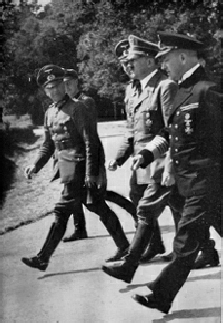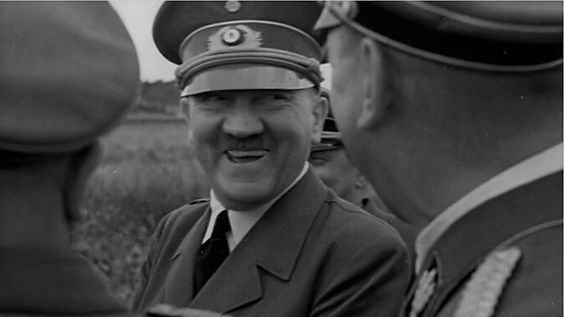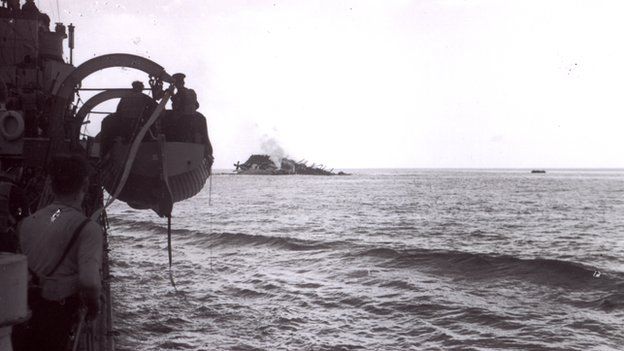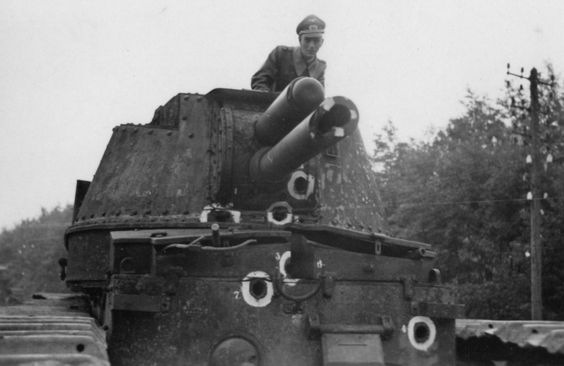Monday 5 August 1940
 |
| Spitfires over England, August 1940. |
First thing in the morning, bombers attack shipping south of Selsey Bill. They have no success and wisely depart upon sighting RAF fighters.
Another formation of Junkers Ju 88s attacks the convoy about an hour later, around 08:00. The Spitfires of No. 65 Squadron based at Hornchurch intervene, and a dogfight erupts between them and Bf 109s of I,/JG54. The British lose a plane and the Luftwaffe has two damaged.
Another battle erupts around the same time along the coastline near Kent. RAF No. 64 Squadron sends its Spitfires up against more JG 54 fighters, both sides losing a fighter and another Bf 109 damaged.
The afternoon features the main event of the day. Junkers Ju 88s escorted by Bf 109s of JG 51 once again fall on Channel shipping. RAF Nos. 41 and 151 Squadrons intercept. A wild melee develops, with 7,/JG51 claiming three Spitfires for one loss of their own.
There also are various small-scale raids around Dungeness, with RAF No. 145 downing a Junkers Ju 88 and Henschel Hs 126, but also losing a Hurricane. Around 15:12, a lone raider bombs Norwich and causes more damage than you might think, blowing up a railroad installation and some nearby lumber yards. Lone intruders also hit various unconnected spots such as Brighton, Leighton Buzzard, Milford haven, Isle of Grain and Middlesborough. There also are some bombs dropped basically in the middle of nowhere around midnight in Northumberland, likely by a lost bomber or two. The attacks are random and scattered, thus difficult to defend against.
Another convoy attack takes place during the afternoon off Yarmouth. RAF No. 242 Squadron downs a bomber or two.
For its part, RAF Bomber Command continues its raids on airfields and ports in northwest Europe, attacking its usual targets of Schiphol/Amsterdam, Borkum, Hamburg, Kiel and nearby areas.
Most accounts give the day to the RAF by a wide margin, but a close look at the individual actions suggest a much closer score.
1,/JG51 suffers perhaps the most serious loss on its home field when Staffelkapitän Hptm. Douglas Pitcairn of 1./JG 51 runs into his wingman on takeoff. He has to be replaced by Oblt. Hermann-Friedrich Jöppien.
 |
| Stukas, August 1940. |
276 ton trawler River Clyde hits a mine and sinks off Aldeburgh Light float, a dozen men perish.
British 5112 ton rice freighter Cape St. George hits a sunken wreck southeast of Cape Verde and sinks. All 65 aboard survive.
German raider Atlantis embarks the captured freighter Tirranna with 274 prisoners - all that will fit, there are still almost 100 left on the Atlantis - and sends it back to France with a prize crew.
Troop convoy WS 2 departs a British port, bound for British garrisons in India and Egypt via the Cape of Good Hope.
The Queen Mary enters a graving dock in Singapore for full conversion to a troopship, complete with paravanes.
Convoys MT 131 and OA 194 depart from Methil, Convoy FS 243 departs from the Tyne.
Battle of the Mediterranean: On Malta, there is an air raid alert at 15:15, but it is only an Italian decoy mission to attempt to engage the new Hurricane fighters. They fly over the island for a while, then fly off after briefly tangling with one of two Hurricanes which rise to challenge them. The Italians may figure that the new pilots brought in on the 2nd via Operation Hurry are inexperienced and thus would be easier to dispose of now rather than after more time passes - a view shared by Malta's Governor-General Dobbie.
General Sir Archibald Wavell flies in from his headquarters in Alexandria. Visits like this are extremely important for island morale. This is the first leg on an extremely hazardous journey to London for consultations, and of course, the entire thing is extremely hush-hush.
British Somaliland: The Italian invasion from Abyssinia continues against light opposition. Two of the three Italian columns capture their objectives, Hargeisa and Zeila, without much hindrance. The third column is approaching its objective, Odweina. Italian bombers are active throughout the region, attacking various British strong points on the coast such as Berbera, Burao, and Zeila. The British have virtually no air presence in the region.
Anglo/US Relations: Imperial Airways flying boat Clare makes the first of a series of mail/courier flights from Great Britain to New York's La Guardia Field aka New York Municipal Airport via Newfoundland.
British Ambassador Lord Lothian presents his government's proposal for a swap of certain British possessions in exchange for 50 or 60 old US destroyers.
French Vice-Admiral Georges A.M.J. Robert, in command of Vichy forces in the French West Indies, meets with American Rear Admiral John W. Greenslade regarding the powerful French naval forces in the Western Hemisphere. This is a touchy subject: while the US and France are both technically neutral, the US has been supporting the British and Vichy France has been actively collaborating with Germany. However, every overseas French command has been making its own individual decision about who to support.
US Chief of Naval Operations Admiral Harold Stark coordinates the exchange of scientific information with Sir Henry Tizard's British mission, which has just arrived.
 |
| Life Magazine, 5 August 1940, has a big spread on US Vacations. |
German/Italian Relations: Hitler and Mussolini have discussions. For once, Mussolini has something to brag about in British Somaliland.
German Military: OKW Chief of Staff Franz Halder reviews the first operational plans for Operation Barbarossa, the invasion of the Soviet Union planned for 1941. They have been prepared by staff officer General of Artillery Erich Marcks. It is called Operation Draft East. It proposes two thrusts to reach the Arkhangelsk-Astrakhan line (the "A-A Line") during a summer campaign. This would require the capture of Leningrad, Kyiv, Moscow, Stalingrad, the occupation of all territory west of the Volga, and most of the industrialized areas of the USSR, the entire Donetz basin, and the Grozny/Maikop oil fields before the snows hit.
While first drafts are not expected to be perfect, the draft's fantastic assumptions demonstrate the extreme confidence - over-confidence - of the Wehrmacht in its outlook following the victory in France. The fact that Marcks is not laughed out of Halder's office, but instead has his draft taken seriously, speaks volumes. Having an artillery officer draft the plans, which will call for extravagant panzer thrusts and highly mobile operations just to occupy that amount of territory in that amount of time, much less pry it out of the hands of the Soviets, shows how unrealistic the entire planning process is.
 |
| The Manly ferry in Sydney Australia approaches wharf number three in Circular Quay, August 5, 1940 (Photo from the Fairfax archives). |
US Government: President Roosevelt and US Attorney General Robert H. Jackson appear before the Governors of 42 States and urge the passage of laws against foreign spies and "Fifth Columnists."
Baltic States: Latvia joins its fellow Baltic States in "voluntarily" becoming the Soviet Socialist Republic of Latvia.
Holocaust: Germans are now required to carry a Certificate of Ancestry, the Ahnenpass, showing their racial purity stretching back to 1800. Interesting, several German leaders, including Adolf Hitler himself, might have some difficulty producing such documentation themselves.
In Holland, butchers are arrested for violating a new law banning the kosher preparation of meat.
US Homefront: Frederick Albert Cook passes away in New York. He claimed to reach the North Pole a year before Robert Peary in 1908, and while that (along with other claims) soon was dismissed, he did make important discoveries during his expeditions.
 |
| "Commander of Britain's Defense" Sir Alan F. Brooke graces the cover of today's Time Magazine. |
August 1, 1940: Two RN Subs Lost
August 2, 1940: Operation Hurry
August 3, 1940: Italians Attack British Somaliland
August 4, 1940: Dueling Legends in the US
August 5, 1940: First Plan for Barbarossa
August 6, 1940: Wipe Out The RAF
August 7, 1940: Burning Oil Plants
August 8, 1940: True Start of Battle of Britain
August 9, 1940: Aufbau Ost
August 10, 1940: Romania Clamps Down On Jews
August 11, 1940: Huge Aerial Losses
August 12, 1940: Attacks on Radar
August 13, 1940: Adler Tag
August 14, 1940: Sir Henry's Mission
August 15, 1940: Luftwaffe's Black Thursday
August 16, 1940: Wolfpack Time
August 17, 1940: Blockade of Britain
August 18, 1940: The Hardest Day
August 19, 1940: Enter The Zero
August 20, 1940: So Much Owed By So Many
August 21, 1940: Anglo Saxon Incident
August 22, 1940: Hellfire Corner
August 23, 1940: Seaplanes Attack
August 24, 1940: Slippery Slope
August 25, 1940: RAF Bombs Berlin
August 26, 1940: Troops Moved for Barbarossa
August 27, 1940: Air Base in Iceland
August 28, 1940: Call Me Meyer
August 29, 1940: Schepke's Big Day
August 30, 1940: RAF's Bad Day
August 31, 1940: Texel Disaster
2020



















